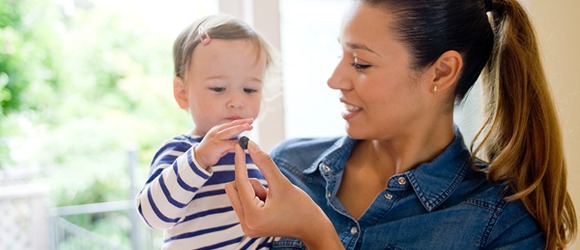
Tips for Transitioning to a New Nanny or Babysitter
Preparing kids for change, whether its a holiday or moving, the first day of school or a new baby is difficult. Probably one of the most challenging changes for young children is the transition to a new nanny or babysitter. In many cases this caregiver has been with your child since they were very young and the little one has spent most of their daytime hours in the care of this nanny. Often your child is very attached to this babysitter or nanny, regarding them essentially as another parent.
The way you handle the transition from one caregiver to another will affect how your little one copes with the change. Planning the entire process--from saying goodbye to the old caregiver to helping him adjust to the new nanny, helps both you and your child feel better.
- Engender the Previous Relationship. No matter how young your child is, don't minimize his feelings of loss. If he tells you he misses his former caregiver, sympathize with him and tell him that you miss her too. Look at pictures of her together and talk about the fun things they used to do. If she still lives nearby, make an effort to set up occasional visits.
- Ease Into the Transition. A gradual introduction to the new caregiver should be considered if you think the transition will be difficult. If possible, have the two nannies overlap a few days or more in your employment. This allows the child to see them as a team of caregivers and friends and helps build trust.
- Involve Your Child in the Selection Process. Include your child in the interviews and ask her opinion about the candidates. Children can be very good judges of character, and are good at sizing up whether or not a person likes them.
- Choose a Fitting New Caregiver. With your child make a list of the things he loved in the current caregiver, and consider these as criteria when hiring her replacement. Also, look for someone who is nurturing and has good attachment qualities. Does she make eye contact with you and your child? Is she a hands-on person who will give your child hugs and be affectionate appropriately? Bottom-line, during the interviews, you need to be constantly asking yourself "Is this a person I want to have influence over my child , and will I feel good about my child getting attached to her?"
- Thoroughly Prepare the New Caregiver. Share as many insights about your child as you can: his daily routine, interests, and unique personality quirks. As well, share things he enjoyed doing with his former caregiver and what he loved about her. You are not looking for a clone, but similar good attributes in both caregivers will make the transition easier.
- Plan the First Few Days Carefully. On her first day of work, have her share some of his favourite activities and play with his favourite toys. This also may be a time for an exciting new activity or outing. Also, let your child see that you like the caregiver by praising her appropriately. If he is comfortable with the routines, the activities and even the snacks, it provides a positive experience that will help their relationship get off to a great start.
It is good that your child is closely attached to her caregiver, and it's quite healthy if she's sad that she's leaving. The downside of this is finding a replacement that is the same but different, affording your child another positive relationship.
The ability to form strong attachments is one of the most important qualities a growing child can develop. Early attachments establish the roots for healthy relationships later in life. In fact, studies have shown that people who are most attached to their caregivers as infants and children are more likely to forge deep and meaningful relationships as adults.
With careful and thoughtful planning the transition from caregiver to caregiver does not have to be a traumatic experience for your family.